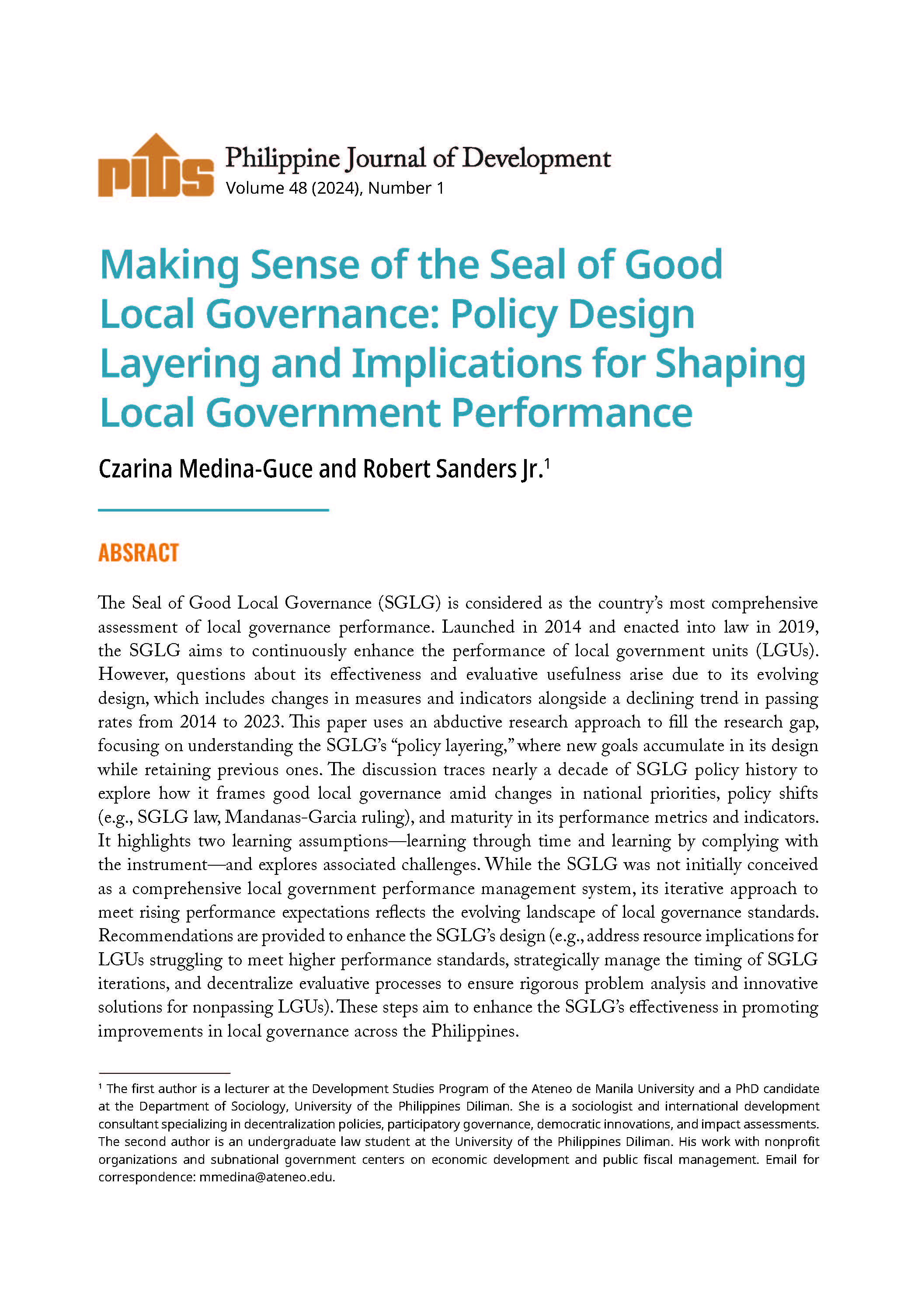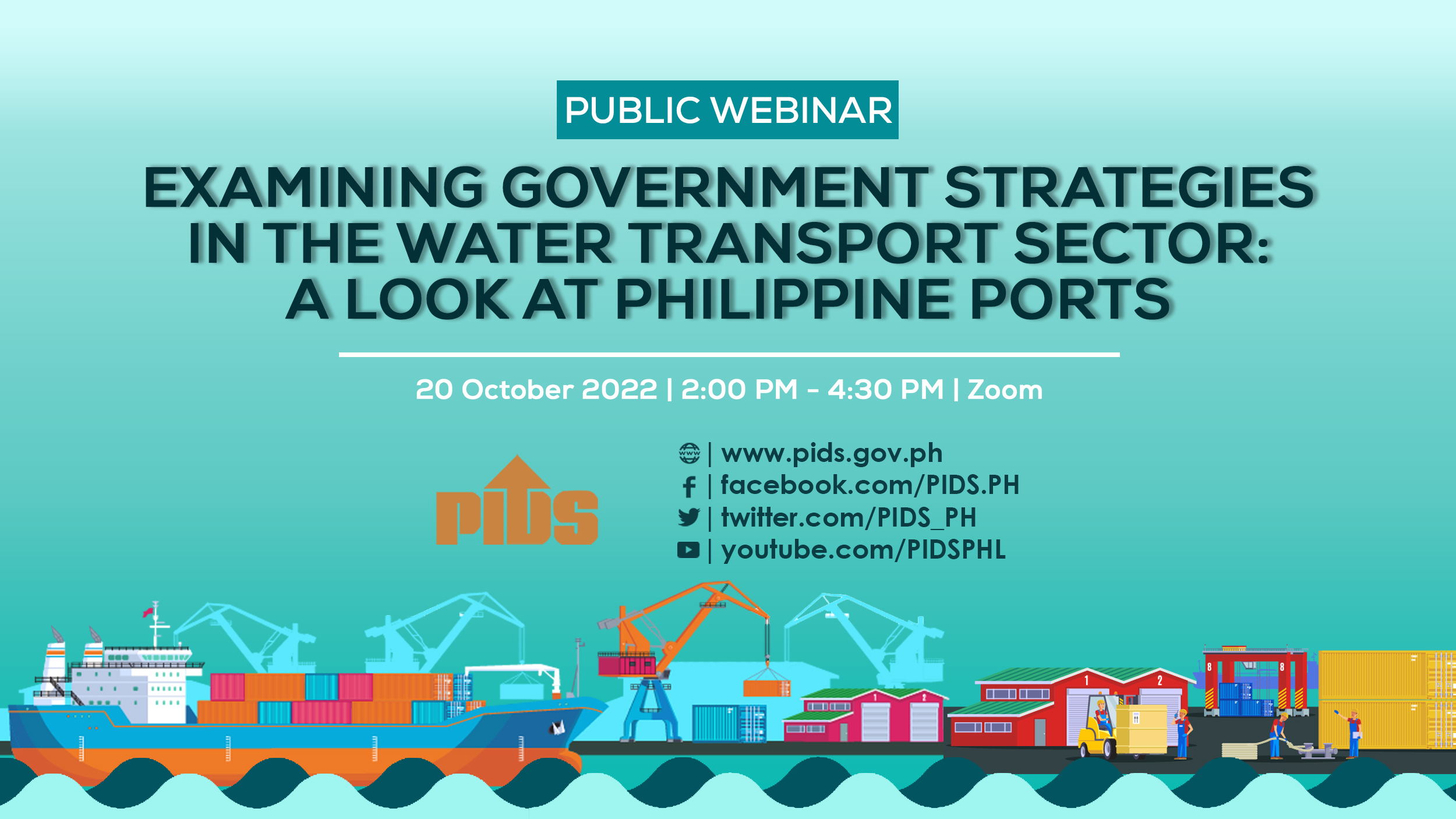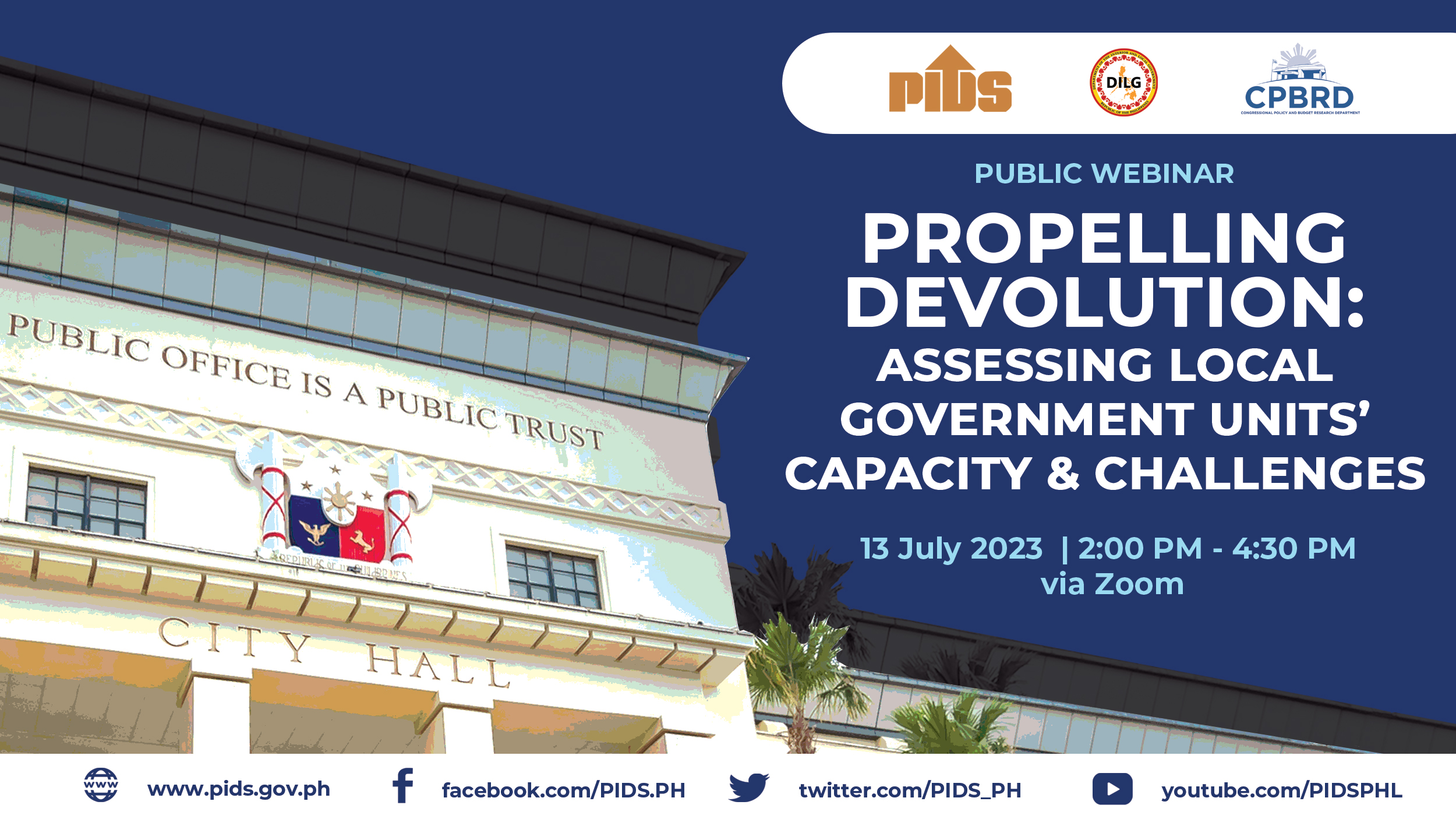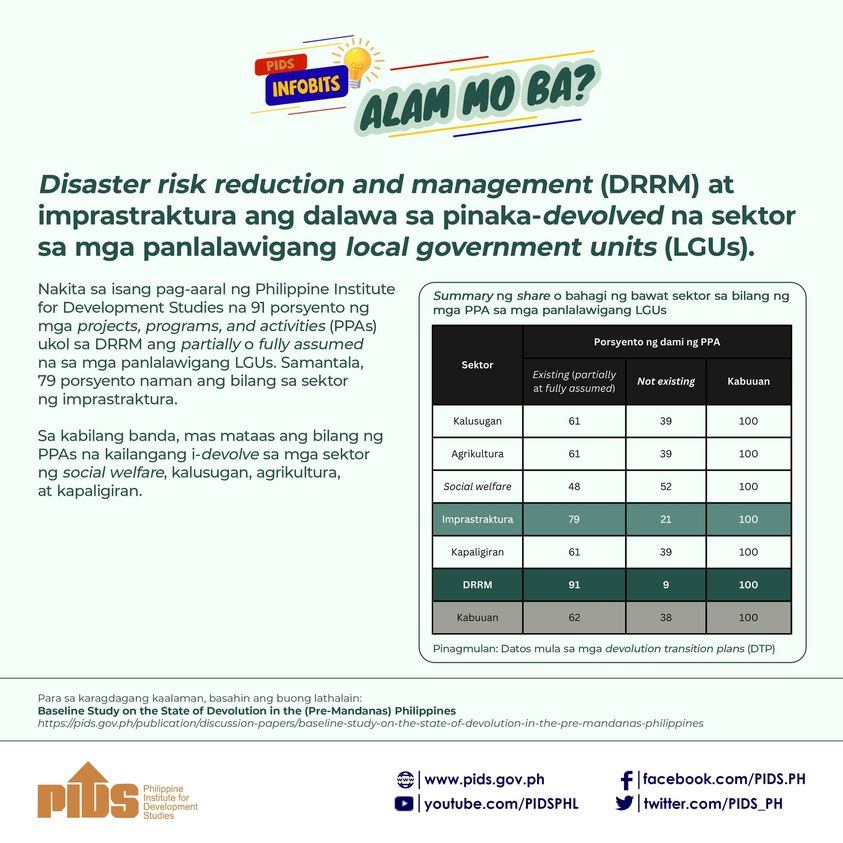FOR many years, millions of Filipinos were practically on the fringes of policy-making and nation-building simply because government statisticians could not reach them. The real plight of Filipinos was lost in a sea of estimates and projections as the government lacked the required resources and means to include them in official surveys.
As technology has now made it possible to reach those in remote areas, the government through the Philippine Statistics Authority (PSA) is banking on innovations to get a clearer picture of the socioeconomic condition of 105 million Filipinos. The PSA is leaning on technology to fully implement two measures—the Philippine Identification System (Philsys) and the Community-Based Monitoring System (CBMS).
These developments, according to National Statistician Claire Dennis S. Mapa, will allow the Philippines to finally address many of the physical limitations of data collection in remote areas in the country as well as meet the Sustainable Development Goals (SDGs), among others.
These are crucial given that the SDGs are no laughing matter. Globally, the goals are composed of around 169 targets with 230 indicators adopted in September 2015. Of these, 92 targets with 155 indicators under the 17 SDGs are on the approved initial list of SDG indicators for monitoring in the Philippines.
Apart from the sheer number of targets and indicators, data for the SDGs should be disaggregated according to gender, minority groups, age, geography, and whether the data pertain to persons with disability, among others.
Many of these information are currently not collected by the PSA, but with the help of technology, Mapa hopes that the Philippine Statistical System (PSS) will be given a fighting chance to collect data to properly monitor the country’s progress.
All these will not be possible without the efforts of “data champions” that took up the cause of the PSA, said the country’s first National Statistician Lisa Grace S. Bersales.
In a recent presentation, Bersales said the PSA has received increased support in the past few years. The budget of the PSA reached P7.32 billion in 2020, 10.45 percent higher than the P6.63 billion this year. The 2020 budget is also 342.69 percent higher than the P1.65-billion budget granted to statistical agencies prior to the creation of PSA in 2014.
“[This was all thanks to] the championship first of [former Socioeconomic Planning] Secretary [Arsenio] Balisacan then of course Secretary [Ernesto] Pernia. The championship of [former Budget] Secretary [Florencio] Abad then [former Budget] Secretary [Benjamin] Diokno. So that’s why I keep saying the champions, those that matter, they brought this all together and everything seemed to have converged,” Bersales told the BusinessMirror in an interview.
‘New oil’
A man on a makeshift raft paddles down the shanties-lined Parañaque River in Manila, February 12, 2011.
The importance of data, especially official statistics, cannot be overemphasized. Even the National Economic and Development Authority (Neda) recognized that data is now the “new oil.”
Philippine Institute for Development Studies (PIDS) Senior Research Fellow Jose Ramon Albert told the BusinessMirror that official statistics are important in providing the “summary of conditions” of a country.
Data in the form of official statistics are used as evidence by policymakers on the ways forward in addressing concerns, such as improved agricultural policy, better health regulations, or employment threats that could endanger the jobs of millions.
Albert said, however, official statistics is no simple matter. Governments must make the decision to invest in it. “While many of the official statistics produced by the PSA and the PSS, when properly understood, can help us prepare for the risks we may face, the statistics may still need strengthening.”
He also said that while the budget for statistics has increased, this was mainly due to the need to finance implementation of the national ID.
“Budgets of the PSA are hardly increasing. If there are increases, it is only done to develop the national ID, which is not even an statistical function. Government must invest in statistics and statisticians if it wants to get better insights on opportunities and challenges we face in modern times,” said Albert.
‘Reality outpacing fiction’
During the recently concluded 14th National Convention on Statistics (NCS), Vice President Maria Leonor G. Robredo said there is a greater need for quality data in a rapidly changing world where “reality is outpacing fiction.” She said data is the “lifeblood of decision-making.”
Robredo said this underscores the important role statisticians play in society. This is especially the case with the need to understand big data. She said big data can open opportunities, such as greater productivity and pave the way for “game-changing innovations.”
It can also improve government’s efforts to address income inequality and extend help to those in need when disasters strike. Robredo said the only challenge is how to transform information into concrete programs.
Neda Undersecretary Rosemarie G. Edillon agreed with Albert, saying investing in statistics is important for the Philippines to keep pace with a fast-changing world.
As knowledge is the new oil for a modern economy, this can be mined through proper investments in quality data and meaningful statistics. Apart from investing in human capital, Edillon said there is also a need to improve statistical systems so these become more responsive to the needs of the country.
The Neda official described today’s world as “VUCA”—volatile, uncertain, complex and ambiguous. She said only knowledge can help make sense of today’s world.
Innovations
Edillon said one of the latest statistical innovations is the creation of the multidimensional poverty index (MPI), which measures deprivations and not income poverty. Under the MPI, the PSA identified 13 indicators across the following four dimensions: education; health and nutrition; housing, water and sanitation; and employment.
The data is currently based on the Annual Poverty Indicator Survey (Apis), but will soon be based on the Family Income and Expenditure Survey (FIES). This will provide greater depth and reach when it comes to obtaining information from local government units (LGUs) or at least in the provincial and regional level.
Neda said the MPI, which has already been adopted by several countries in the world, captures the multiple deprivations that each person experiences, in relation to education, health and living standards.
PSA said one is “multidimensionally deprived” or poor if he or she is deprived in at least three or four of the 13 indicators. Results of the PSA survey show that multidimensionally deprived Filipinos—or the proportion of Filipinos deprived in at least four out of the 13 indicators—were estimated at 23.9 percent in 2016 and 17.3 percent in 2017.
Apart from the MPI, Bersales said the PSA has also been able to address longstanding concerns with regard to its statistical products. For one, the PSA had improved the National Accounts of the Philippines as well as the National Demographics Health Survey.
By 2018, the PSA was able to release data on births, marriages and deaths on a quarterly basis. The data were released three months after the reference quarter. In the first and second quarter of 2018, information were published through infographs and statistical tables according to region, province and city/municipality.
Also notable was the rebasing of the Consumer Price Index (CPI), which moved the base year of the CPI to 2012 prices from 2006 prices. This is crucial as this will make the computation of the country’s inflation rates more accurate.
As for the FIES, Bersales said the PSA expanded the sample size of the FIES to 180,000 sample households. This was implemented in the 2018 FIES and was 4 times larger than the sample size used in previous rounds of the survey.
The first Philippine Data Festival, which aimed to bring data closer to a younger generation, was another initiative of the PSA. The event gathered 324 participants from various state universities and colleges, schools, national government agencies and private organizations.
In terms of harnessing new technology, the PSA converted 4.35 million civil registry documents into digital images through scanning. By the end of 2019, a total of 170.881 million records will be loaded into the PSA’s Civil Registry.
Geotagging
The PSA also now uses geotagging during surveys. PSA’s enumerators use tablets that allow them to geotag the households included in the sample of households for major surveys such as the FIES and the quarterly Labor Force Survey (LFS).
The geotagging efforts of the PSA include buildings, such as residential buildings. The process involves gathering information on the number of floors of each building, as well as roof types and wall types.
In collecting data from households, the PSA now uses tablet-aided face-to-face interviews and logs data in a cloud service. This means the government has begun its adoption of the Computer-Assisted Personal Interviewing (CAPI), which it hopes would be the norm in data collection.
The PSA is currently piloting an exercise that will enable the agency to use crowdsourcing technology for crop forecasting, according to Mapa.
Mapa said the PSA has maximized its online presence by not only providing statistics online, but also giving the public free access to its household-based surveys and the data enclaves of establishment-based surveys.
Mobile applications of statistics products, such as E-Classification and Presyo sa Palengke Mobile App, are now part of the PSA’s menu of services as well as the OpenStat Portal, which includes various statistical information.
Challenges
While all these initiatives augur well for efforts to harness the potential of the PSA in a modern world, the agency continues to face a number of challenges, according to Albert.
He said there is a lot of room for improvement, particularly where the digital economy is concerned. The PSA does not have official statistics on the proportion of Filipinos who access the Internet or more accurate and timely information on the creative economy which is benefitting from technological advancements.
“Even if you are doing well, there is always room for improvement, especially as the country seems blind on the extent of growth of the digital economy, particularly the platform economy. The only information and communications technology-related statistics that PSA produces is the proportion of e-commerce in a firm’s value added,” said Albert.
“We don’t even have official statistics on the proportion of Filipinos with access to the internet, or to social media (although we can get this information from alternative data producers such as We are Social). Neither is there any tracking of the extent and growth of the creative economy, which can be an area where the Philippines can show its competitive advantage,” he added.
Bersales said the PSA still needs to work on addressing data gaps, particularly on the subnational level, in-between survey years, and sectoral data or those that are disaggregated according to disability or indigenous origins.
She added that the PSA continues to be challenged by the need to streamline and harmonize its surveys and review its methodologies, particularly on official poverty statistics, to make it more responsive to the needs of Filipinos at this time.
Since the PSA is moving toward the use of big data, including administrative data, it must come up with classification standards and quality assurance frameworks for administrative data and registries.
According to Mapa, the passage of the law mandating the setting up of the CBMS presents huge opportunities, but also carries administrative and funding constraints. He said “opportunities” mean being able to provide subnational and disaggregated data needed for the SDGs and other surveys.
One of the biggest concerns of the PSA when it comes to the CBMS is that it does not have an allocation for 2020. When the law was passed in July, Mapa said the budget call for Fiscal Year 2020 was already made and the needs of the PSA to implement the law was not included in proposed General Appropriations Act.
He said, however, that Sen. Sherwin T. Gatchalian has agreed to help the PSA secure around P100 million to P150 million to help set up the system and ensure that it will run smoothly.
The money will be used to hire additional staff, particularly in PSA’s field offices, as well as jumpstart the standardization of survey questions. Mapa said around 800 LGUs have been able to conduct at least one CBMS which was initially used for the Conditional Cash Transfer (CCT) program.
However, the conduct of the CBMS was largely local and no standards were set on the national level. There was also no regularity in its conduct and was dependent on the resources of the LGUs. Mapa said this left half of the LGUs nationwide, particularly 5th and 6th class municipalities, without any CBMS.
Mapa estimates that the PSA would require at least five additional personnel per PSA field office to ensure that the CBMS is carried out. With 81 field offices, the PSA may require 405 new employees. This is a conservative estimate given that there are provinces that have several highly urbanized cities which will require more staff.
Apart from the budget, Mapa said the confidentiality of the data for the CBMS is also a concern. If the CBMS will be used for targeting various social services, the identity of the households will have to be revealed. This, he said, is the reason the PSA is looking forward to working with other government agencies in implementing the CBMS.
“I understand that the CBMS will be used for targeting. The view is that the CBMS data will be used for poverty targeting of, in particular, the DSWD [Department of Social Welfare and Development] and other government programs. So while the DSWD right now is thinking about it, my reading is that the CBMS data will actually replace the ‘Listahanan,’” Mapa said.
“The implementation of the CBMS is a challenge but given that it is a challenge, there is also an opportunity [specifically] to answer our SDG indicators. So I think this is still okay for us [since we now have a] vehicle to answer SDG. It is also possible that the Annual Poverty Indicator Survey could be derived from this module. And our concern with civil registration that some households are not included [would be addressed by the] CBMS,” he added.
‘Trustworthy data’
One of the keys to overcoming all these challenges is to secure the public’s trust. Albert said the PSA should be more conscious about keeping its data trustworthy, especially in today’s “post-truth era.”
Albert said the PSA needs to regularly engage data users and make sure they give feedback. This is useful in ensuring that statistics are fit for use and guide the PSA on how it can remain relevant amid the increasing need for reliable and timely statistics.
With big data, crowd-sourced data and other non-traditional data sources now at the Filipinos’ fingertips, he said the PSA will need to be more innovative in its business practices.
Mapa agreed with Albert, saying agencies like the PSA consider public trust as their “greatest asset” at this time. He said the public trust that the PSA now enjoys has paved the way for the passage of the national ID.
It may be recalled that coming up with a national ID has been on the horizon since the 1990s. But privacy concerns have often been cited as one of the strongest arguments against its implementation.
“The Philippine ID finally became a law [due to the public’s] trust in the PSA. It’s more of, as data collector, the PSA is just after the data. So we maintain a high level of confidentiality. In fact in all our surveys, we’re not really concerned with names although we get it, we’re not talking of these issues, so we are very careful,” said Mapa.
“I think there is a culture in the PSA staff that data confidentiality is important and that is I think the reason why the public was finally accepting [of this move],” he added.
Mapa said the PSA is committed to keeping the public’s trust. The PSA is willing to go the extra mile to ensure data security, particularly when it comes to major programs, such as the CBMS and the national ID.
To ensure that data is secure, the PSA is now working with the Department of Information and Communications Technology (DICT), even if these are in the cloud. He added that the PSA has also secured the assistance of an independent party, the accounting firm SGV, to conduct impact assessments for the agency.
The “new oil” may be cheap, but its collection and safekeeping require the cooperation of Filipinos and the commitment of government officials. Used properly, this “new oil” could even fuel the Ambisyon 2040 train and enable the government to realize its dream of the Philippines joining the ranks of high-income countries.












